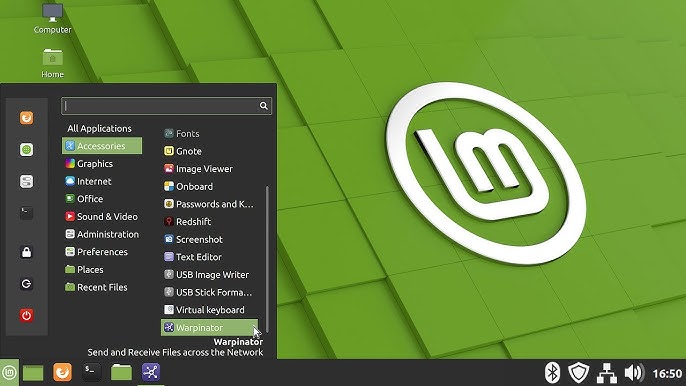PERMALINK
Why I Use Linux Mint
Introduction
Switching operating systems is a big decision, especially when you’re accustomed to one. I’ve tried a lot of different Linux distributions over the years, but I always come back to Linux Mint.
It offers a combination of simplicity, stability, and flexibility that fits both my development workflow and personal use perfectly. In this post, I’ll share the reasons why Linux Mint is my go-to operating system and why it might be the right choice for you too.
Familiar Interface
One of the reasons I gravitate toward Linux Mint is its Cinnamon desktop environment. It feels familiar, like Windows, which makes the transition to Linux less jarring. You get the traditional taskbar, start menu, and desktop icons, all while benefiting from Linux’s power and stability.
If you’re moving from Windows, you’ll appreciate that the interface isn’t wildly different, and the learning curve is smooth.
Out-of-the-Box Functionality
Mint comes preloaded with a ton of useful software, meaning I can get started right away without having to download and configure dozens of applications. For example, it comes with:
- LibreOffice for documents and spreadsheets
- Firefox for browsing
- Timeshift for backups
- GIMP for image editing
This makes the setup process quick, and it’s perfect if you just want to get straight to work. No need to hunt for basic tools.
Stability and Reliability
As someone who develops software, I need an OS that’s reliable. Linux Mint is based on Ubuntu LTS, which means it benefits from a long-term support base, with updates focused on security and stability rather than flashy new features. I don’t have to worry about random crashes or system updates breaking my workflow.
Mint is ideal if you’re looking for an OS that “just works” without a lot of troubleshooting. I love the fact that I can count on my system to run smoothly for long stretches, especially during development or gaming sessions.
Software Management
Linux Mint makes software management easy with its Software Manager. Installing, updating, and removing software is a breeze. The package manager allows me to search for applications and install them with a single click. And if you prefer terminal commands, Mint plays nicely with apt, Ubuntu’s package management tool.
Whether I need developer tools, media players, or productivity software, I can quickly get what I need.
Compatibility with Development Tools
Mint is also perfect for developers. It comes with support for a wide variety of programming languages and tools. Setting up development environments like Node.js, Python, and Go is straightforward, and I love how smoothly it integrates with Neovim, which I use as my code editor.
Here’s why Mint stands out for development:
- Terminal First: The terminal is efficient and customizable, allowing me to automate tasks and work in multiple environments.
- Customizable Workflows: Mint’s lightweight design means I can configure my system without the bloat, setting up custom scripts and tools specific to my needs.
Privacy and Control
Unlike Windows, which tends to be more invasive with telemetry and forced updates, Linux Mint puts privacy and user control at the forefront. I can control when and what updates I install, and I don’t have to worry about telemetry or data collection happening in the background.
Community Support
Finally, Mint has a huge and active community. Whether I’m stuck with an installation issue or looking to tweak something on the OS, I can always find answers in the Mint forums or on websites like StackOverflow. It’s comforting to know that help is always available when needed.
Conclusion
Linux Mint hits the sweet spot between being user-friendly and powerful enough for my development and everyday needs. Its stability, familiar interface, privacy-focused design, and compatibility with all the tools I use make it the perfect OS for me. If you’re looking for a Linux distro that blends ease of use with powerful features, Mint might be just what you need.
Have you tried Linux Mint? What are your thoughts? Let me know!
